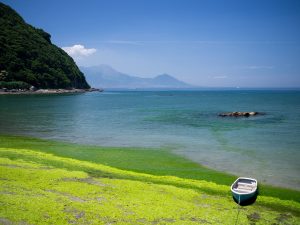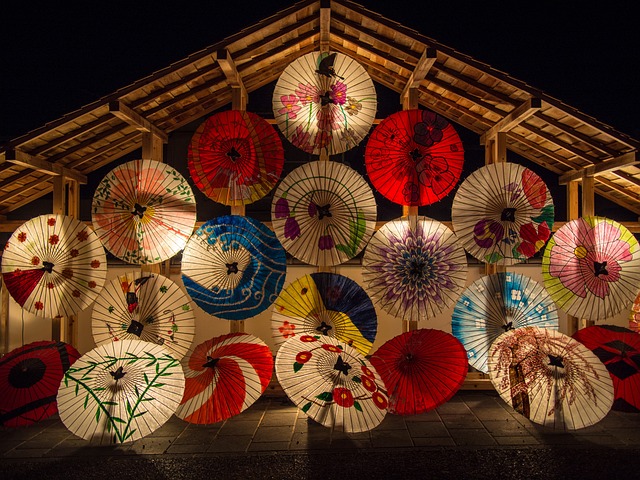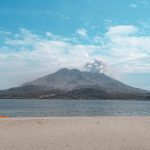The Kyūshū National Museum is the biggest museum on the island of Kyūshū and it houses amazing works of art and various important historical artefacts from all around Japan. Everyone coming to Kyūshū is encouraged to visit the museum to learn about the local history and art traditions.
In this article, we will talk about the creation of the museum and together we will explore the permanent exhibition that can be found at the Kyūshū National Museum.
Establishing the Museum
The founding of the museum was long time a-coming, but various events and lack of funds led to quite a long delay.
The first attempts to create a museum in Kyūshū were recorded in the 1870’s. In 1873, Kyūshū hosted the Dazaifu Exposition which showed artefacts from the Dazaifu Tenmangu Shrine. The exhibition was held again in 1874 and 1875, and its goal was to bring interest to Kyūshū and consequently help establish a museum on the island.
Unfortunately, the plan did not work.
20 years later, in 1893, Nishitakatsuji Nobukane (a Meiji-period artistocrat) and Endo Masazumi (an archeology scholar and head priest of the Dazaifu Tenmangu Shrine) drafted plans for the creation of museum which were approved by the Home Ministry. However, the plans were scrapped when the Sino-Japanese War started.
Following that, many Kyūshū locals advocated for the establishment of a museum, alas in vain.
That was until in 1968, around a century since the first attempt at establishing a museum, the Creation of the Association for the Establishment of a National Museum in Kyūshū was founded. The association had representatives from both the government and the private sector.
In 1971, the Dazaifu Tenmangu Shrine donated 14,000 square metres of land to be used for the building of the museum. Still, the process proved to be lengthy and the association in charge of establishing the museum was reorganised many times over the next few decades which further delayed the opening of the museum.
Finally, more than 130 years after the first attempt to found a museum in Kyūshū, the museum was ready to welcome visitors. In October 2005, the Kyūshū National Museum formally opened to the public.
Building and Facilities
The museum was designed by famed Japanese architect Kiyonori Kikutake (1928-2011) and it features modern elegant curves of metal and many windows which bathe the inside of the museum in light.
Much like the exterior, the interior of the museum is just as modern as it features top-notch technology that helps make the museum accessible for everyone.
There are many video panels which put the artefact on display in context and give visitors interesting information about it. Additionally, there are interactive displays that allow visitors to engage with the art in new and fun ways.
What’s also interesting about the museum and its facilities is that it features its own conservation labs rather than subcontracting conservation work like most Japanese museums. This allows the Kyūshū National Museum to preserve its permanent exhibits and to also aid in the preservation of artefacts in Western Japan.
Last, but not least, the museum has an indoor theatre that hosts lectures and concerts and is available to rent.
Permanent Exhibitions
In this section, we will briefly discuss the parts of the permanent exhibition at the Kyūshū National Museum, which are divided into different sections:
- Jōmon Culture: Ocean-Bound – The oldest part of the permanent exhibition; it displays artefacts dating from 35,000 years ago to the 4th century BCE. The exhibition shows the path from nomadism to permanent settlement, and the beginning of the Jōmon culture.
- Political Power: Cultivating Rice – The next section is dedicated to artefacts dating from the 4th century BCE to the 7th century CE, and in particular, the cultivation of rice and the first metalwork in Kyūshū.
- National Building: The Age of the Envoys – This section exhibiting items from the 7th to 12th century shows the cultural exchange between Kyūshū and China. The Kyūshū envoys, through diplomatic means, made the island a centre for trade and cultural exchange with other Asian countries. They brought new practices and beliefs such as Buddhism to Japan and consequently helped develop a unique Japanese culture.
- Merchants of the Asian Seas – Showcasing artefacts from the 12th to 16th century, this section is dedicated to the rise of the samurai class and the further development of international trade. The same period brought the beloved tea to Japan which in its turn created the beautiful tea ceremony.
- Smaller World, Closer West – This exhibition section, displaying items from the 16th to 19th century, captures the first contact with European traders, the subsequent Japanese isolationism, and the many cultural exchanges between West and East over the centuries.
Apart from the permanent exhibition floor, the Kyūshū National Museum also has a dedicated interactive exhibition gallery called Ajippa. Featuring the latest technology, Ajippa transports visitors to the different periods found in the permanent exhibition.
Tourists can play games, “dress” in traditional costumes and play musical instruments from Japan and other countries with which Japan had notable interaction over the years. Ajippa really makes the museum unique and it shows Japanese technological ingenuity at its best.
Conclusion

We hope you enjoyed reading this article and we hope we encouraged you to visit the Kyūshū National Museum. If you’re impatient to visit, here’s the address of the museum: 4-7-2 Ishizaka, Dazaifu City, Fukuoka Prefecture, Japan 818-0118.



